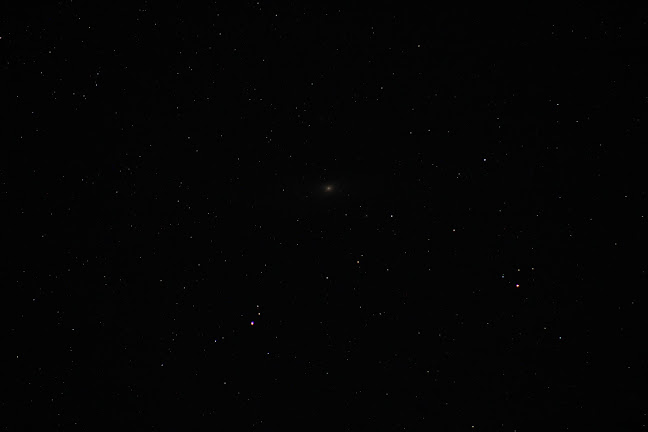Thoughts on Astrophotography
This bottom image is from my attempt at astrophotography back on August 14. It is one of 50 images taken with our Canon EOS Rebel T7 DSLR mounted piggyback on my Celestron Nexstar 8SE. These were 10 second exposures with a Canon EF75-300 zoom lens. I had it set at 300mm focal length, which gives an F number of 5.6. As I noted at the time that little fuzzy spot just above center is the Andromeda Galaxy, Messier 31 (M31).
After taking the images, I attempted to process them using Siril, a free open source astronomical imaging tool. I attempted to follow the steps outlined in the You Tube video by SarahMaths Astro. She does an excellent job of explaining the basic process. However, when I tried to run the processing script, I found out that I had messed up in taking the calibration frames, which caused the processing script to fail.
As the skies got cloudy with some fall weather, I revisited the processing. I looked at the additional pre-made scripts that had been created for Siril, and found one that was specifically written to stack the images without the calibration frames. Without the calibration frames, the images were noisy. I ran that preprocessing script, then autostretched, cropped, and removed excess green noise from the image. (for an explanation of what stretching an image means, look at this article from Sky and Telescope magazine). The result is the top image. I also found that I was slightly out of focus. It is a lousy image, with lots of noise, but still reveals some detail not fully visible to the visual observation I made.
The focus issue also caused me a little confusion at first. What I took to be a brighter out of focus star actually turned out to be another galaxy, M32. I was able to confirm this by looking at reference images and in "Turn Left at Orion." M32 is about 2,000 light years across and 20,000 light years away from the Andromeda galaxy. Stop for a moment and think of those distances when you look at that image. In the image they appear right next to each other. Andromeda itself is approximately 2.5 million light years away from us, is about 150,000light years across, and contains over 300 billion stars!
For a first effort, it's still pretty abysmal. However, what is essentially a failure taught me a lot more than if it had worked right out of the box. (visualize me slapping my forehead and going "duhhh".) First lesson is to have a written plan of action for a photography session so I don't leave out any of the important steps. Secondly, it shows that I can get DSLR imaging of DSOs (Deep Space Objects) to work if I follow the simple plan. Third is that I am starting to learn Siril. There are other free programs that do parts of the process, but from what I can tell so far Siril seems to be the easiest to use and only needs the one program for both pre and post processing. There are people who use GIMP or Photoshop to further clean up imaages, but I don't know that I will go that far.
I had also imaged Saturn the same night. What I found is that short of attaching the camera to the telescope in place of the eyepiece, essentially turning the scope into a giant camera lens, the image scale is too small on the sensor to be effective. At some point in the future, I may try that.
I remain primarily a visual observer, but do have a wish to share what I see with others. Hopefully my sketching will improve to the point where I can do that accurately. But I also see the photography as a means to share. AS I become more experienced as an observer, there are also actual scientific observations that can made by amateurs, such as those carried out by the AAVSO (American Association of Variable Star Observers).





this is a really good article - I appreciate you filling in some of the word-pictures with real pictures - and, by the way, you should be thrilled at the ability to see those deeper space objects - that first picture is really really a big step up!
ReplyDeletethanks for the detail. Incidentally, this is well written and very understandable by a astronomy ignorant person (me).
ReplyDeleteYour sketches are awesome because I think of them as akin to what ancient peoples did to try and understand what we understand. I think you are seeking, in some ways, the same things. I think you should continue to work on photography too. There are likely some unique insights that would come from both the process and the final product.
ReplyDelete